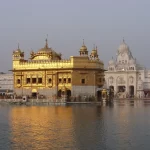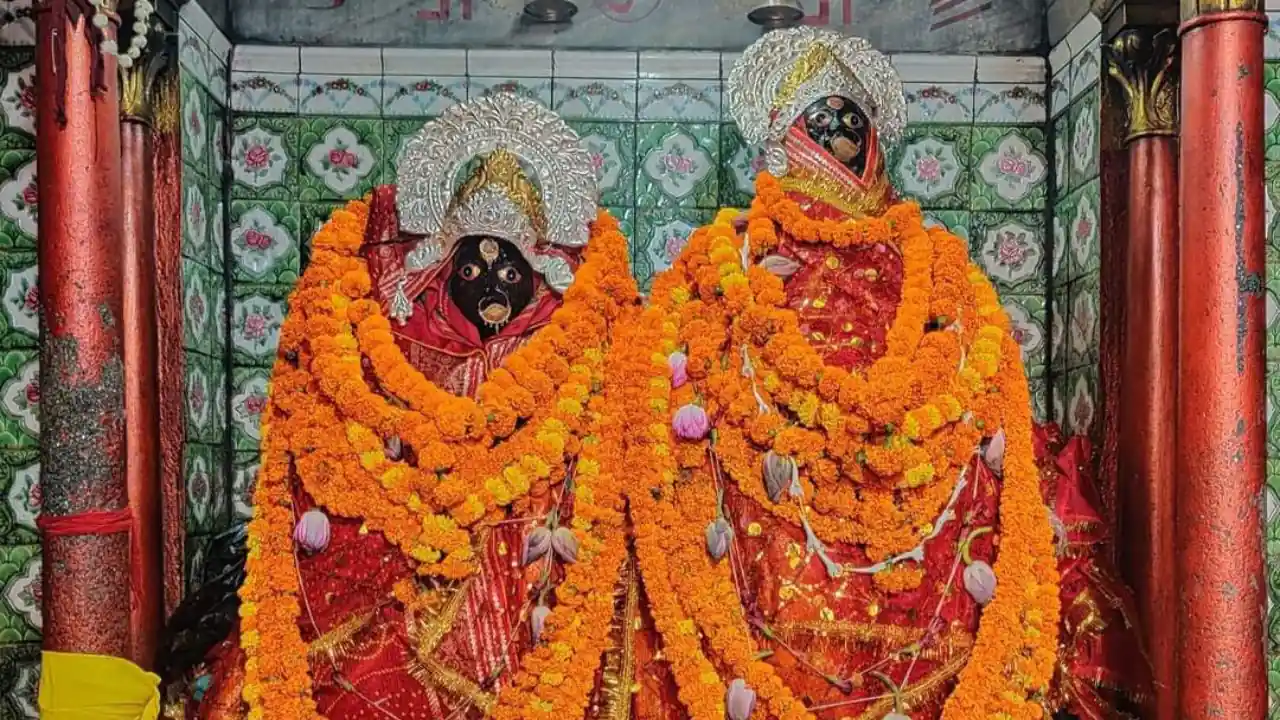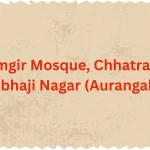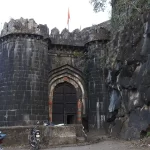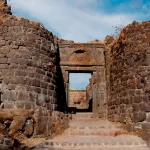Ready to experience the spiritual aura of Aranya Devi Temple? Share your travel plans in the comments or download our free Bihar pilgrimage itinerary!
🔴 Brief Introduction:
Nestled in the heart of Arrah, Bihar, the Aranya Devi Temple stands as a beacon of spiritual energy and historical grandeur. Revered as one of the 108 Shakti Peethas, this temple is not just a place of worship but a living chronicle of India’s epic past. From its ties to the Mahabharata and Ramayana to its role as the city’s presiding deity, Aranya Devi Temple is a cultural cornerstone for millions.
In this detailed guide, we unravel the temple’s layered history, architectural evolution, and its significance in Bihar’s spiritual landscape. Whether you’re a pilgrim, history buff, or curious traveler, this article offers everything you need to plan a fulfilling visit—complete with travel itineraries, cultural insights, and local secrets.
Aranya Devi Temple – Arrah, Bihar: A Spiritual Odyssey Through Time
“Where Ancient Whispers Meet Modern Devotion in the Heart of Bihar”
🟢 Detailed Introduction:
Nestled in the bustling town of Arrah, Bihar, the Aranya Devi Temple stands as a timeless sentinel of faith, history, and cultural resilience. Revered as one of the 108 Shakti Peethas — sacred sites where fragments of Goddess Sati’s body are believed to have fallen—this temple is more than a place of worship. It is a living archive of India’s spiritual and mythological legacy.
Known locally as the “Guardian Deity of Arrah”, the temple’s origins are steeped in legends that stretch back to the Satya Yuga, making it a pilgrimage site where time itself seems to fold. The goddess Aranya Devi, symbolising the union of wilderness (Aranya) and divinity, embodies the region’s deep connection to nature and cosmic energy.
The temple’s history is a tapestry woven with threads from Hindu epics. According to the Devi Bhagavata Purana, it is recognized as a Siddh Pitha, a Power centre where devotees’ prayers are said to manifest miraculously. Legends tie its origins to the Mahabharata era, when the Pandavas, during their exile, worshipped Adishakti here.
Yudhishthira, guided by a divine dream, installed the idol of Aranya Devi, cementing her role as the city’s protector. Another tale links Lord Rama’s journey to Janakpur, where sage Vishwamitra revealed the temple’s sanctity, prompting Rama to bathe in the Ganges and seek the goddess’s blessings. These narratives, passed down through generations, blur the lines between myth and history, inviting pilgrims to walk in the footsteps of epic heroes.
Architecturally, the temple is a humble yet profound blend of symbolism and devotion. Though the current structure was rebuilt in 2005, its design echoes ancient traditions. The east-facing sanctum, crowned by a circular dome, houses twin black-stone idols of Aranya Devi—said to represent Saraswati and Mahalakshmi—adorned in vibrant yellow sarees and floral garlands. Flanking them are marble statues of Ram, Sita, and Krishna, installed in 1953 by local merchants.
Also Read
Anjaneri Hill – Nashik, Maharashtra: Where Myth Meets Majesty
The west veranda features a Shiva Linga and Nandi, while a discreet “Gupta Daan Peti” (Charity Box) allows anonymous offerings, reflecting the temple’s ethos of selfless service. Today, a 108-foot-tall renovation project aims to honour the 108 Shakti Peethas, symbolising the temple’s enduring relevance in a modernising world.
The temple’s cultural heartbeat pulses strongest during festivals. Navratri transforms its courtyards into a kaleidoscope of devotion, with nightly Aartis and rhythmic chants drawing thousands. During Chhath Puja, devotees throng the nearby Son River, carrying forward a 3,000-year-old tradition of sun worship.
Local priest Ramdas Ji shares, “The goddess is not just a deity here—she’s a mother. During festivals, her energy blesses even the most weary souls”. This emotional bond is mirrored in the temple’s role as a community hub, where rituals, marriages, and festivals intertwine with daily life.
Arrah’s demographics add layers to the temple’s story. The town, with its 261,430 residents, thrives on Bhojpuri culture, where temples like Aranya Devi anchor social cohesion. Over 80% of the population speaks Bhojpuri, a language rich in folk tales that often reference the temple’s legends.
The local economy, driven by sand mining and brick kilns, finds balance in the spiritual commerce around the temple—flower vendors, Prasad stalls, and artisans crafting Madhubani paintings. Notably, the temple’s renovation has spurred job opportunities, blending tradition with progress.
Accessibility makes Aranya Devi a beacon for pilgrims nationwide. Arrah Junction, just 3 km away, connects to Delhi (1,000 km), Kolkata (550 km), and Varanasi (200 km). The nearest airport, Patna (60 km), offers daily flights, while NH 22 and 30 ensure smooth road access.
For those journeying from Mumbai or Chennai, a stop at Patna’s historic Golghar or Mahavir Mandir en route adds depth to the pilgrimage. Auto-rickshaws and cycle carts ferry visitors through Arrah’s vibrant lanes, where the scent of Litti-chokha (roasted wheat balls) mingles with temple incense.
Climate plays a pivotal role in planning a visit. Winters (October–March), with temperatures between 11°C – 28°C, are ideal for exploring the temple’s open courtyards. Summers (April–June) can be harsh (up to 38°C), though mornings and evenings remain serene.
Monsoons (July–September) drench the region in 300–400 mm of rain, turning the temple’s gardens lush but limiting outdoor rituals. Local farmer Shyam Babu notes, “The goddess blesses our harvests—come monsoon, even the temple walls seem to breathe life”.
Beyond spirituality, the temple is a lens into Bihar’s socio-cultural fabric. Interviews with elderly devotees reveal untold stories—like the 1953 installation of the Ram-Sita idols, funded by a merchant’s life savings.
Young guides narrate tales of King Mayurdhwaj, whose devotion to Krishna was tested through a heart-wrenching sacrifice, only to be rewarded by the goddess’s intervention. These oral histories, absent from textbooks, thrive in the temple’s shadow, offering a visceral connection to the past.
In essence, the Aranya Devi Temple is not merely stones and idols—it is Bihar’s soul etched in time. From its mythical roots to its modern-day renaissance, it embodies resilience, faith, and the unbroken thread of tradition. As the sun sets over its dome, casting golden hues on devotees’ faces, one realises: here, every brick whispers a story, every ritual echoes an epic, and every visitor becomes part of its living legacy.
Aranya Devi Temple – Arrah, Bihar
“A Sacred Forest Shrine Steeped in Epics, Faith, and Timeless Legends”
🟣 Section Breakdown:
1. History & Legends: From Pandavas to Modern Revival
2. Architectural Grandeur: Blend of Myth and Modernity
3. How to Reach: Connectivity from Major Cities
4. Best Time to Visit: Seasonal Insights
5. Nearby Attractions: Beyond the Temple
6. Cultural Deep Dive: Festivals, Food, and Local Life
7. Travel Tips & Climate: Weather, Demographics, and More
8. FAQs: Your Queries Answered
🟠 Detailed Section Breakdown:
🔘 History & Legends: From Pandavas to Modern Revival
The Aranya Devi Temple’s origins are shrouded in myths that span millennia. According to the Devi Bhagavata Purana, it is recognized as a Siddh Pitha, a power centre where wishes are believed to manifest. Legends tie it to pivotal moments in Hindu epics:
👉 Mahabharata Connection: The Pandavas, during their exile, worshipped Adishakti here. Yudhishthira later installed the goddess’s idol after a divine dream.
👉 Ramayana Link: Lord Rama, guided by sage Vishwamitra, halted here en route to Janakpur, bathing in the Ganges and paying homage to the Goddess.
👉 Krishna’s Test: A tale recounts Lord Krishna and Arjun testing King Mayurdhwaj’s devotion by demanding his son’s flesh. The goddess intervened, blessing the king and sanctifying the site.
Though the current structure was rebuilt in 2005, the temple’s spiritual legacy dates back to ancient times. Today, a Multi-story renovation is underway to preserve its sanctity.
🔘 Architectural Grandeur: Blend of Myth and Modernity
The temple’s design harmonizes traditional symbolism with contemporary aesthetics:
👉 Idols & Sanctum: Two black stone idols (10 ft and 3 ft tall) represent Saraswati and Mahalakshmi, adorned in yellow sarees and floral garlands .
👉 Marble Companions: Flanking the main deities are marble statues of Ram, Sita, Krishna, and Radha, installed in 1953.
👉 Structural Layout: The East-facing dome, Shiva Linga in the west veranda, and charity wells reflect a blend of Shaiva and Shakti traditions.
⛔ Did You Know? The temple’s ongoing renovation aims to create a 108-ft tall structure, symbolising the 108 Shakti Peethas.
🔘 How to Reach: Connectivity from Major Cities
Arrah is well-connected via rail, road, and air:
⦿ By Air: Nearest airport is Patna (60 km), with flights from Delhi, Mumbai, and Kolkata.
⦿ By Train: Arrah Junction links to cities like Delhi (1,000 km), Kolkata (550 km), and Varanasi (200 km).
⦿ By Road: NH 22 and 30 connect Arrah to Patna (55 km), Varanasi (4 hours), and Bodh Gaya (150 km).
✦ Pro Tip: Hire a local taxi from Patna for a scenic drive along the Ganges.
🔘 Best Time to Visit: Seasonal Insights
⦿ October–March: Pleasant weather (11°C – 28°C), ideal for Navratri and Chhath Puja.
⦿ Avoid Monsoons (June–September): Heavy rains (290–330 mm) may disrupt travel.
🔘 Nearby Attractions: Beyond the Temple
⦿ Koilwar Bridge: India’s oldest railway bridge (1862) over the Son River.
⦿ Veer Kunwar Singh Setu: World’s longest extra-dosed bridge, linking Arrah to Chhapra.
⦿ Masarh Village: Ashoka-era lion pillars and Mauryan relics.
🔘 Cultural Deep Dive: Festivals, Food, and Local Life
⦿ Festivals: Navratri sees grand Aartis, while Chhath Puja transforms the Ganges ghats into a golden spectacle.
⦿ Local Cuisine: Savour Litti-Chokha, Makuni, and sweets like Thekua at Tulsi Restaurant.
⦿ Handicrafts: Explore Madhubani paintings and bamboo crafts in Arrah’s markets.
✦ Local Insight: “During Navratri, the temple’s energy is electrifying. Devotees fast for days, and the night Aartis are unforgettable!” – Priya Sharma, Arrah resident.
🔘 Travel Tips & Climate
⦿ Weather: Humid subtropical climate; summers (up to 38°C) are harsh, winters mild.
⦿ Demographics: 261,430 population; Bhojpuri is the dominant language.
⦿ Economy: Sand mining and brick production drive the local economy.
🔘 FAQs
What are the temple timings?
5:00 AM – 11:00 AM and 5:00 PM – 8:00 PM.
Is photography allowed?
Yes, but avoid during rituals.
Are there accommodation options nearby?
Hotel Grand Arrah and The Regal Restaurant offer comfortable stays.
🟤 Conclusion
The Aranya Devi Temple is more than a religious site—it’s a journey through time, faith, and cultural resilience. Whether you seek blessings, history, or a glimpse of Bihar’s soul, this temple promises an unforgettable experience.
🔵 Sources:
Image Credit
→ Wikimedia Commons – Aranya Devi Temple, Arrah
For more information, you can visit our website: ExploreXP
Plan Your Visit Today! 🌿✨
“Let the divine whispers of Aranya Devi guide your spiritual quest”.
- Aranya Devi Temple – Arrah, Bihar: Where Mythology Meets Modern Devotion
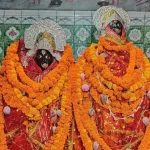
- Anjaneri Hill – Nashik, Maharashtra: Where Myth Meets Majesty
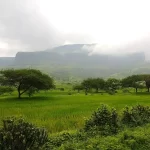
- Anand Sagar, Shegaon, Maharashtra – A Spiritual Oasis Blending Serenity & Adventure
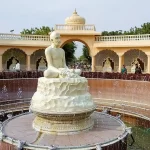
- Aga Khan Palace – Pune’s Monument of Freedom and Legacy

- Attari Sham Singh Railway Station – A Historic Gateway to Punjab’s Heritage

- Amritsar, Punjab: A Timeless Tapestry of Spirituality, History, and Cultural Grandeur
